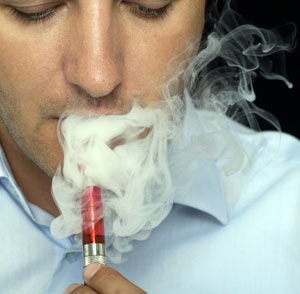Aerosol test results validated

 New research has proved that electronic-cigarette aerosol droplets are effectively delivered to cell surfaces in laboratory-based biological tests, according to scientists at British American Tobacco.
New research has proved that electronic-cigarette aerosol droplets are effectively delivered to cell surfaces in laboratory-based biological tests, according to scientists at British American Tobacco.
The result of the research is important because it helps to validate the findings from such tests.
‘There have been several studies comparing the impact of e-cigarette vapor with that of cigarette smoke on cellular models, and there are a lot of great data out there,’ said Dr James Murphy, head of risk substantiation at BAT.
‘When there is a partial response or no response at all, this can be interpreted as e-cigarette vapor having a reduced biological impact compared to cigarette smoke. But what if it just means we are losing the aerosol and exposing the system to air? We had to be sure.
‘These latest results suggest that we can be confident that we are effectively delivering e-cig aerosol to cells in biological tests and that we can be confident, therefore, in the results of our biological tests.’
The results are published today in Chemistry Central Journal (DOI: 10.1186/s13065-016-0221-9).
The cellular tests mimic key events in the development of tobacco-related diseases such as cardiovascular disease or chronic obstructive pulmonary disease. They form part of a weight of evidence approach to assess the reduced risk potential of electronic cigarettes and other next generation products.
BAT reported that two different smoking/vaping robots had been used to produce aerosol from a reference cigarette (3R4F) and Vype ePen, a commercially available electronic cigarette. The deposited particle mass in exposure chambers was measured, as well as the amount of deposited nicotine. Exposure chambers are used to expose human lung cells to aerosol in the lab and to assess the impact of that aerosol (smoke or vapor) on the health of those cells.
The results had shown that, on a puff by puff basis and at a common dilution, the electronic cigarette aerosol deposited greater mass than cigarette smoke in both systems. In contrast, nicotine delivery was much greater from the cigarette than from the electronic cigarette.
‘It may seem counter intuitive that the aerosol that delivered the most mass had the least impact, but it’s about what that mass represents,’ said Murphy.
The aerosol particles produced by smoke and vapor might appear similar but they were compositionally very different, BAT reported. Smoke was drier and stickier, and therefore lighter than were the glycerine-based electronic cigarette droplets, which were moist and tended to be heavier.
In addition, smoke droplets carried the products of combustion: thousands of chemicals and hundreds of toxicants. Whereas electronic cigarette aerosol droplets contained the aerosolised form of the four main ingredients that made up e-liquids: humectants, water, nicotine and flavouring.
BAT pointed out that many in the public health community believed electronic cigarettes offered great potential for reducing the public health impact of smoking. Public Health England, an executive body of the UK Department of Health, had recently published a report saying that the current expert estimate was that using electronic cigarettes was around 95 percent safer than was smoking cigarettes, though more research was needed. The Royal College of Physicians had said that the public could be reassured that electronic cigarettes were much safer than were traditional cigarettes and that they should be widely promoted as an alternative to traditional cigarettes.